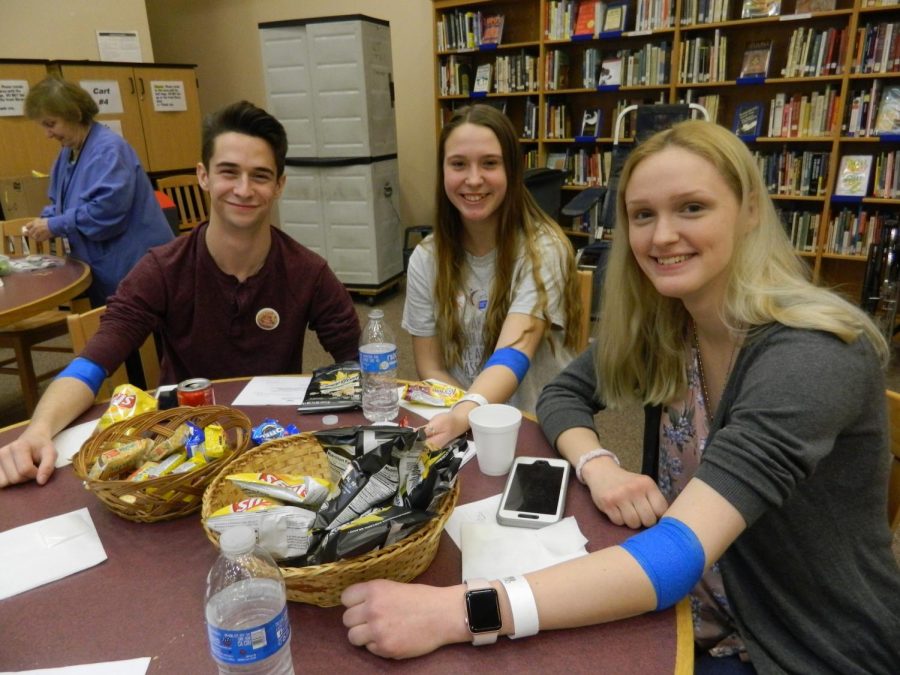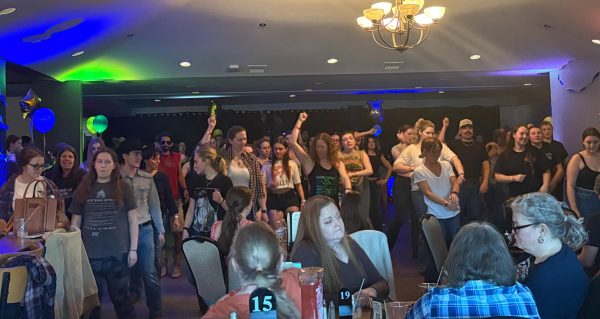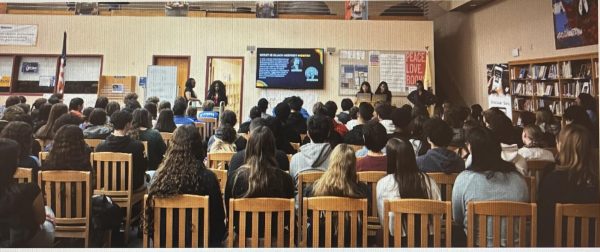Key Club Hosts Blood Drive
Key Club, in cooperation with Miller-Keystone, hosted their annual blood drive in early March in an effort to help lives.
This year, the school mascot walked around lunch tables to promote the event and to get sign ups. The effort apparently paid off, as 82 donated and 76 units of blood were collected.
Students began piling in at 8:30 a.m., eager to help save lives with a simple blood donation. The process was to register, give their medical history, donate, and receive refreshments.
According to the American Red Cross, 36,000 units of red blood cells are needed every day in the U.S. There are misconceptions that a sufficient amount of blood is donated, but every two seconds an American is in need of blood. Donating blood can help save the lives of cancer patients, accident victims, and premature babies.
Donating blood involves a five-step process. It begins with donating, then processing, testing, storage, and distribution.
There are four main blood types that can be donated, all of them in demand. Type O- and AB+ are generally in short supply.
Giving blood is a safe process, as a sterile needle is used only once for each donor and then discarded. People lie down on a bed while giving blood and are given refreshments throughout and at the end of the process in order to replenish sugar and liquids in a donor’s body to prevent passing out.
As reported by the Miller-Keystone Blood Center website, the biggest reason people don’t donate blood is because of a fear of needles. When asked to give advice for new blood donors, Key Club Secretary Joseph Finnegan and Supervisor of Fine Arts Amanda Brown had specific advice.
“It’s good to not think about yourself, but why you’re doing it, “ said Brown,
“The anticipation is a lot worse than the actual process, I’m a bit squeamish myself, but I had no problem,” said Finnegan.
For senior Amanda Reece, who has donated blood since she was a junior, the process is simple and routine.
“They sit you down and these nice elderly people who volunteer put ice packs behind your neck and bring you soda and chips so you have enough salt and sugar,” she said. “One of the nurses will come to sterilize your arm and insert the needle. It takes about five to ten minutes depending on the person.”
Finnegan and Reece said their reason for donating blood was because it was a simple gesture that would make a grand impact.
“I think it’s a good thing to donate blood because five minutes of my life can save three people’s’ lives,” said Reece.
“I felt like it was a good cause, like there was something I could do to help others,” Finnegan said. “If I donate blood throughout my life, I can help support the needs of the citizens of the United States.”





